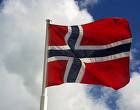
Kon-Tiki Expedition
...is the raft used by Norwegian explorer and writer Thor Heyerdahl in his 1947 expedition across the Pacific Ocean from South America to the Polynesian islands.
It was named after the Inca sun god, Viracocha, for whom "Kon-Tiki" was said to be an old name.
Heyerdahl believed that people from South America could have settled Polynesia in pre-Columbian times.
His aim in mounting the Kon-Tiki expedition was to show, by using only the materials and technologies available to those people at the time, that there were no technical reasons to prevent them from having done so.
(Although the expedition carried some modern equipment, such as a radio, watches, charts, sextant, and metal knives, these were argued to be incidental to the purpose of proving that the raft itself could make the journey.)
Heyerdahl and a small team went to Peru, where, with the help of dockyard facilities provided by the Peruvian authorities, they constructed the raft out of balsa logs and other native materials in an indigenous style as recorded in illustrations by Spanish conquistadores.
The trip began on April 28, 1947. Heyerdahl and 5 companions sailed the raft for 101 days over 4,300 miles across the Pacific Ocean before smashing into a reef at Raroia in the Tuamot Islands* on August 7, 1947. (*Taumot Islands are in French Polynesia)
Thor Heyerdahl's book about his experience became a bestseller.
It was originally published in 1950 as The Kon-Tiki Expedition: By Raft Across the South Seas, later reprinted as Kon-Tiki: Across the Pacific in a Raft.
A documentary motion picture about the expedition, also called Kon-Tiki, won an Academy Award in 1951. It was directed by Thor Heyerdahl and edited by Olle Nordemar.
The original Kon-Tiki boat is now on display in the Kon-Tiki Museum in Oslo.
Note: all the above & more found on http://www.wikipedia.org/
Oslo Museum Webpage link: http://www.kon-tiki.no/

Tangaroa Expedition
On April 28, 2006, a Norwegian team attempted to duplicate the Kon-Tiki voyage using a newly-built raft, the Tangaroa, named after the Māori sea-god Tangaroa.
Again based on records of ancient vessels, this raft used relatively sophisticated square sails that allowed sailing into the wind, or tacking. It was 16m long by 8m wide.
It also included a set of modern navigation and communication equipment, including solar panels, portable computers, and desalination equipment.
The crew posted to their web site. The crew of six was led by Torgeir Higraff, and included Olav Heyerdahl, grandson of Thor Heyerdahl.
...completed successfully in July 2006 and a documentary film is forthcoming.
Note: all of the above & more also found on http://www.wikipedia.org/
Tangaroa Crew Webpage Link: http://www.tangaroa.no/
My note: I did not know they had recreated the expedition as late as 2006, but I am not surprised at all that it would be Norwegians that attempted & succeeded in this endeavor both times...
And thinking back, I can't recall seeing the original movie either, may have to rent it once I'm back in the States from either Netflix or Hollywood Video...along with a long list of other movies I'm missing out on (unless I want to read subtitles or learn Norwegian really quickly--not happening...)





No comments:
Post a Comment